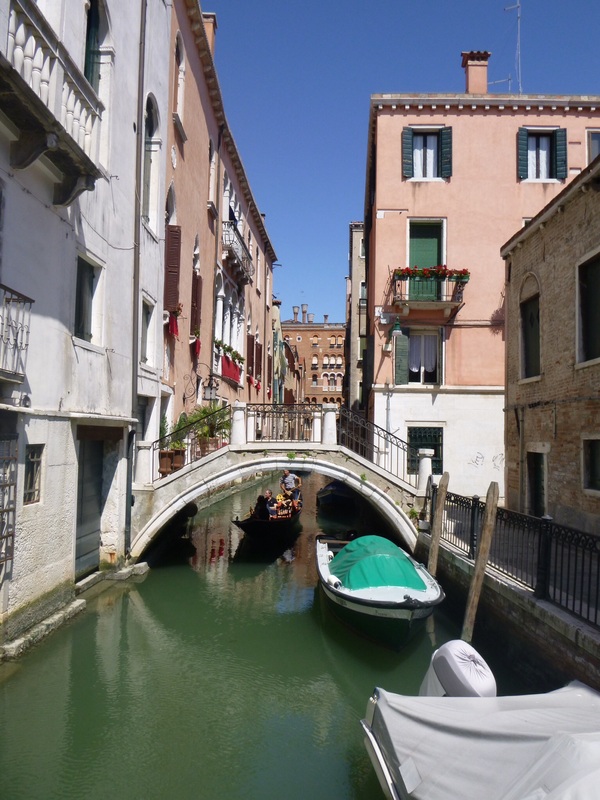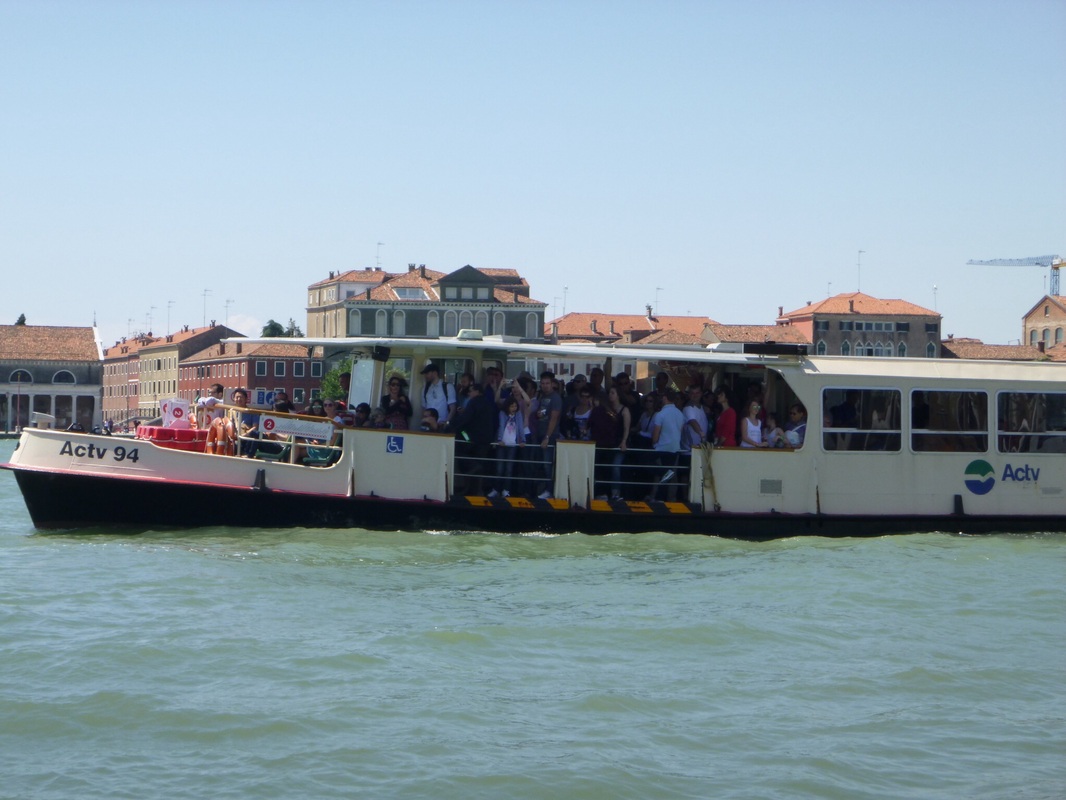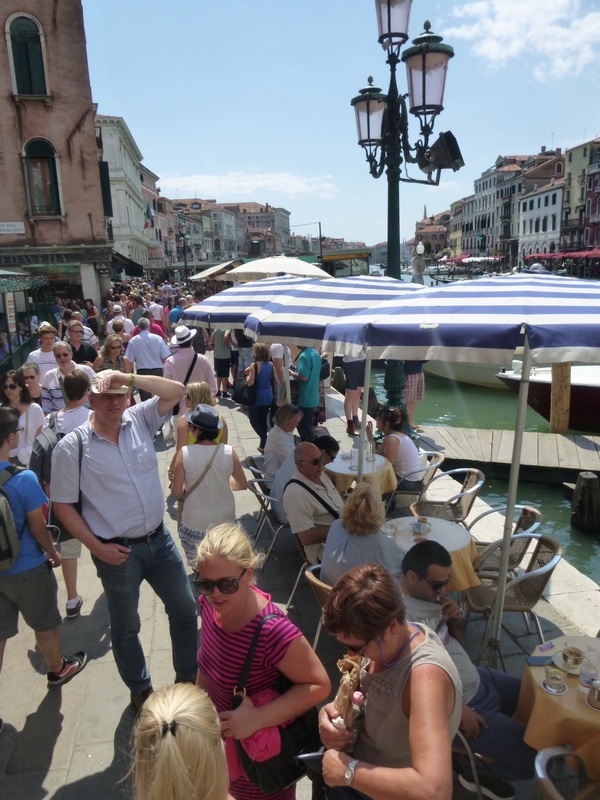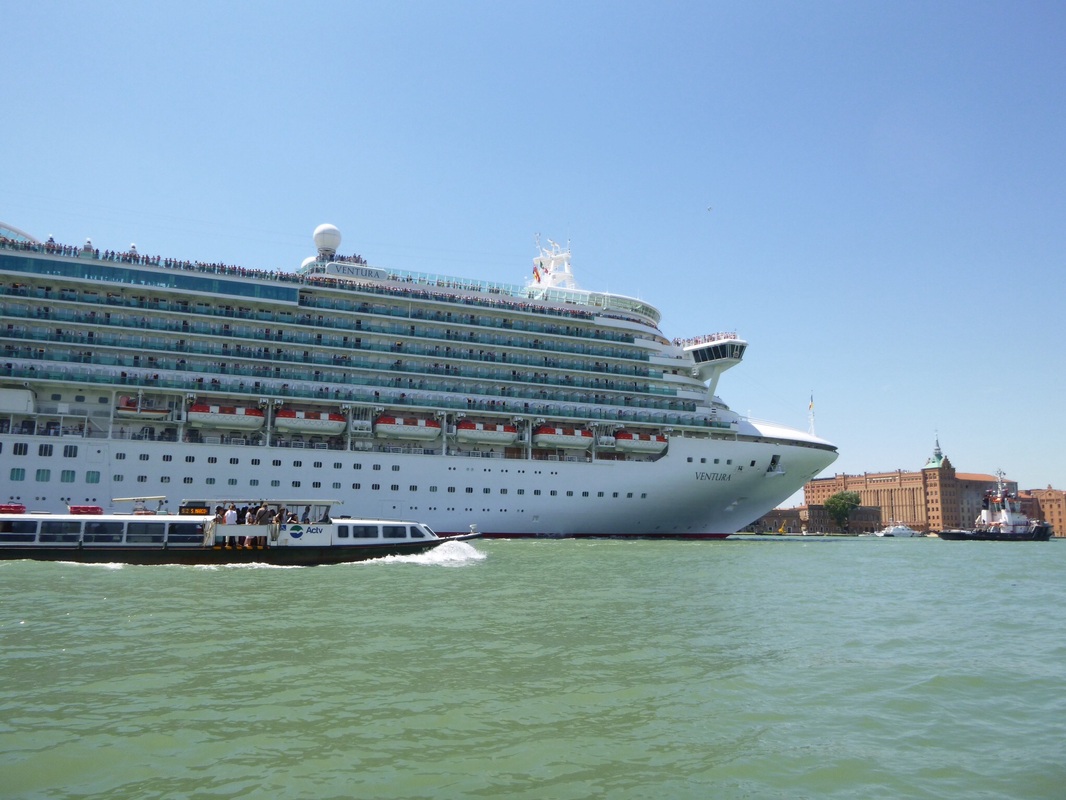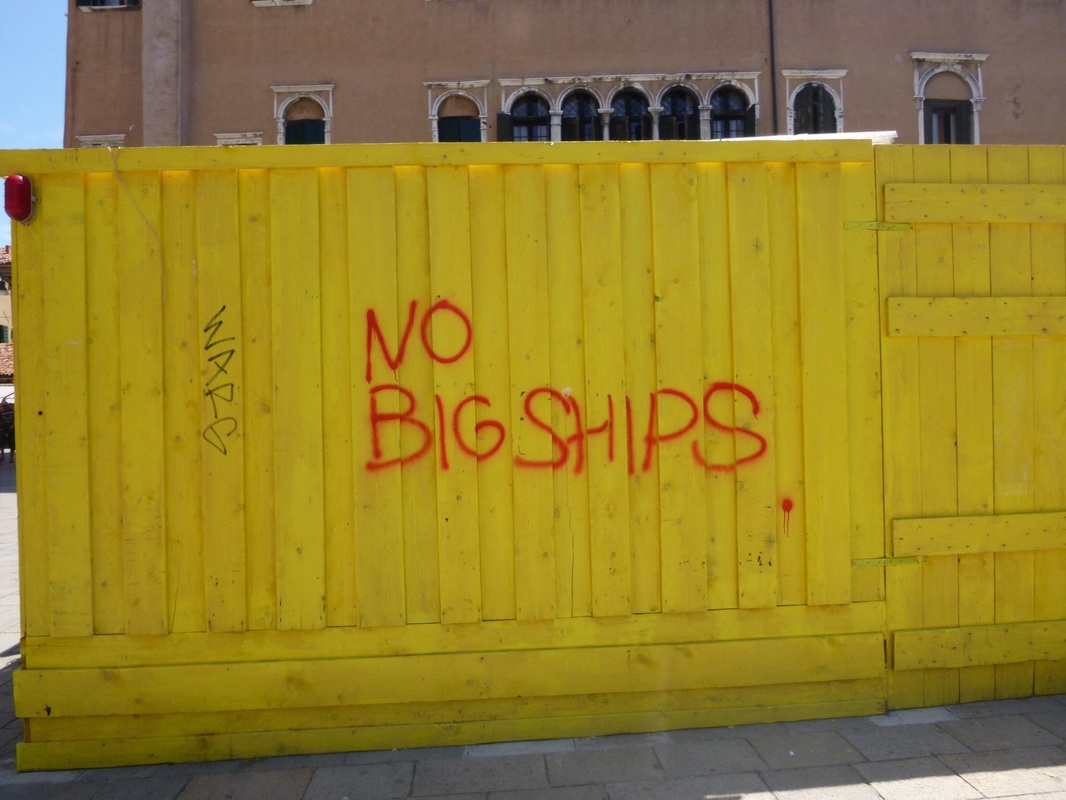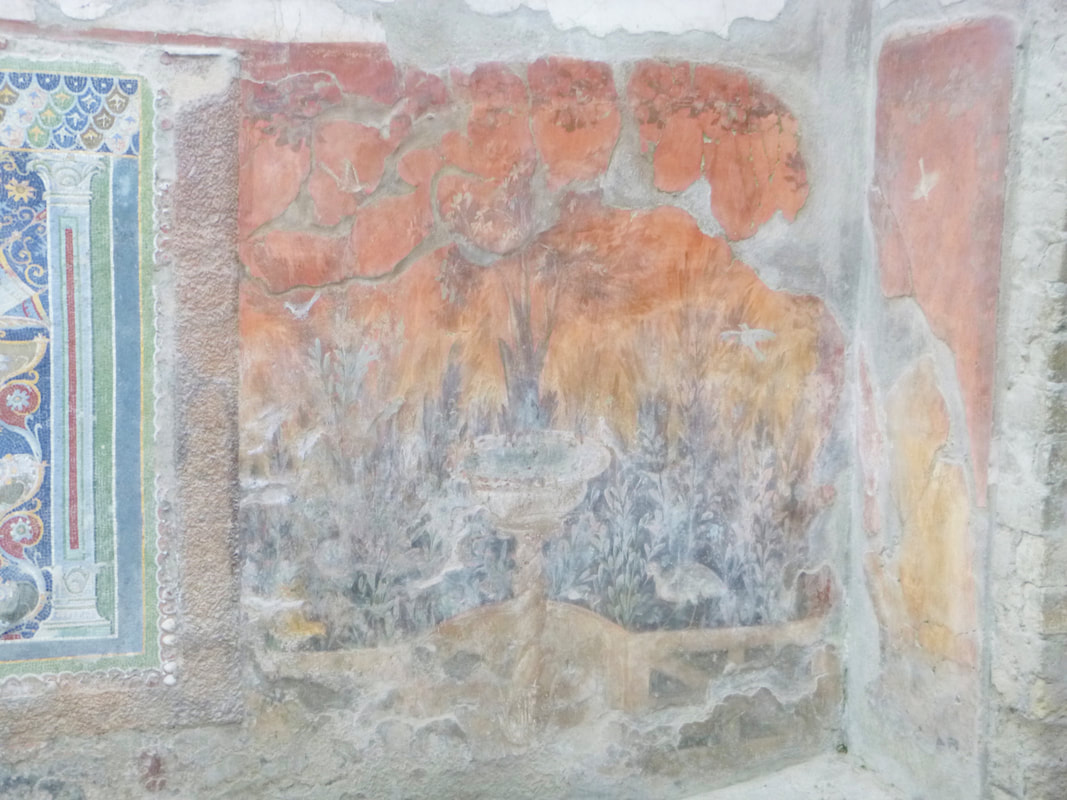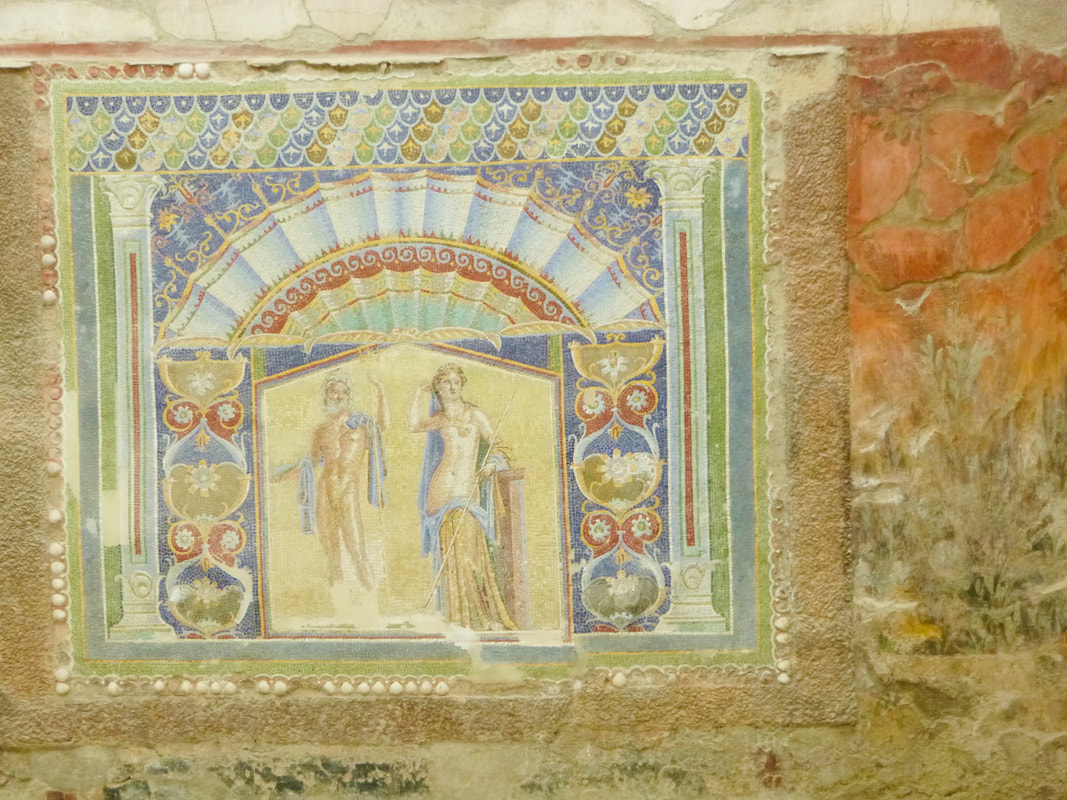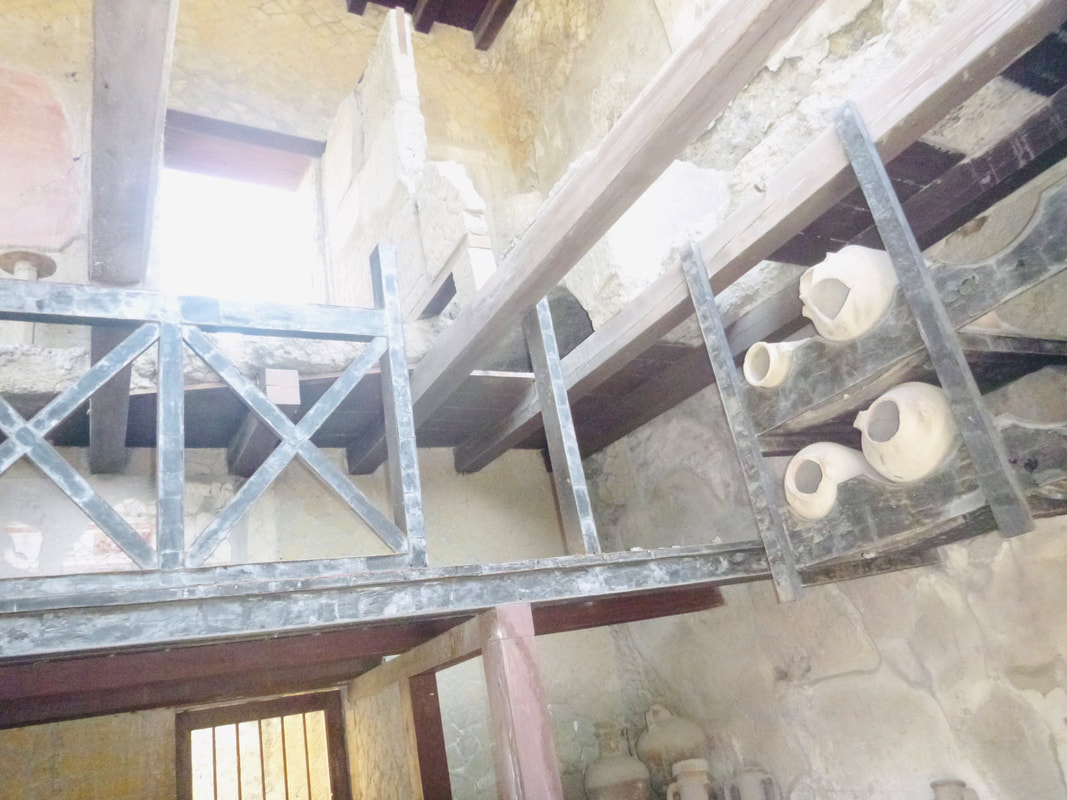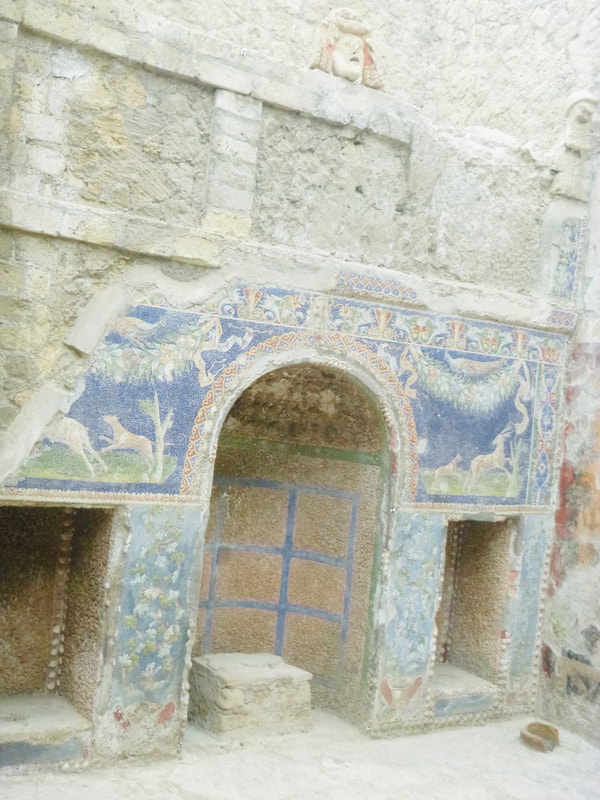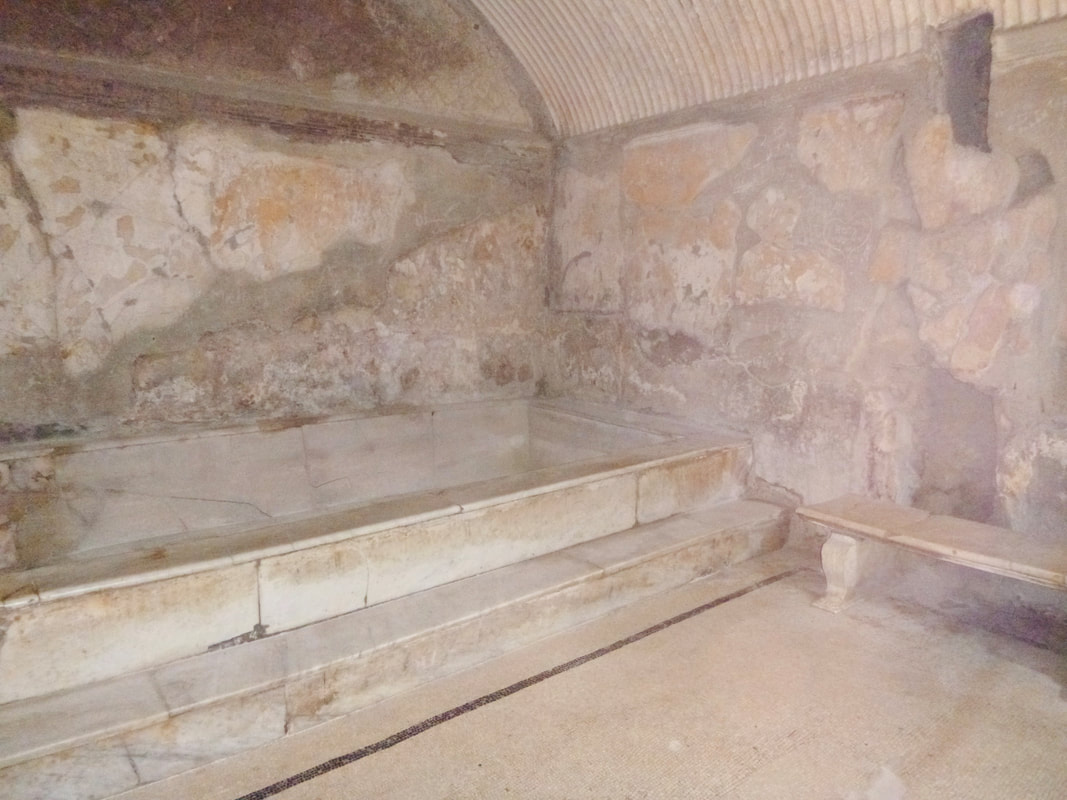For more resources to support 12 Geography - People and Economic Activity (Tourism), see the Economic Activity site.
Edit: An update for this topic has been posted in a new post Tourism - Are we loving Venice to death? Part 2.
1 Comment
We visited Herculaneum today. We were approached by a woman who introduced herself as an archaeologist working on the site and asked if we would like a tour with her. Conchetta (Connie) was fantastic. The depth of knowledge added so much to the experience. She took us underground to an excavated pool, pointed out restoration efforts, showed us areas where items had been removed and so on. We loved every minute of it. Connie was really engaging and obviously enjoyed presenting her work, and as a result she really passed on her enthusiasm to us. When Mt Vesuvius erupted it threw out a gigantic cloud of volcanic ash 30 km into the sky. Herculaneum was also impact by earthquakes. Hot ash and gas rolled down the slope of the volcano burying Herculanuem underground, in some places as deep as 23 metres. Over time Herculaneum was looted with many pieces of marble and bronze statues taken.
This is one of a series of posts on the Sustainability Cross Curriculum Project. Other posts in the series include: Sustainability Cross Curriculum Project (CCP) - Intro Sustainability Cross Curriculum Project - Research Techniques Sustainability Cross Curriculum Project - Evaluation Sustainability Cross Curriculum Project - Use augmented reality Sustainability Cross Curriculum Project - Create a multi-level game Sustainability Cross Curriculum Project - Create a sustainability video Sustainability Cross Curriculum Project - Build a sustainability app Sustainability Cross Curriculum Project - Design a sustainability city or town Sustainability Cross Curriculum Project - Overview For a more student-friendly layout visit the Sustainability Cross Curriculum Project website. Design a city or town showing how you could incorporate a range of different sustainable technologies and techniques which would maintain a growing population for 50 years. Research and review sustainable cities Research and review cities around the world that are considered as sustainable, or which have begun incorporating sustainable practices on a large scale. What strategies have they used to improve their sustainability? Have these initiatives been effective? Do they need improvement? What lessons could you learn from these cities? What are some aspects of sustainability that haven't yet been addressed? Brainstorm sustainable city solutions As a group, write down all of your ideas for creating your sustainable city. Try to be original and innovative. Include all of your ideas, even the ones that might seem silly. Brainstorming allows you to get a whole range of ideas down on paper before narrowing your ideas down to the best and most practical options. Consider the weaknesses of existing sustainable cities and try to come up with original solutions to these problems. Plan and visually map your city Once you have developed your idea you can start to plan your city. How will your city be laid out? What materials will you need? Consider how you will integrate information about sustainability and/or your specific topic. Use the city scaffold to help you plan your city.
Write labels and signage
Write the content for your city signage and create labels to tell the public about the sustainability initiatives in your city. Your model should incorporate content related to the subjects you have chosen and the issue of sustainability in general. Create your city You may use a range of hands-on techniques related to model making to help you build your city. You should use recyclable materials as much as possible to reduce costs. Your model should be no bigger than 1m X 1m X 1m, and should include at least one moving part to indicate power use. You are free to use batteries in your model equipment, but are not allowed to plug anything in. Resources: Spayneville paper city models Model skyscraper city in n-scale This is one of a series of posts on the Sustainability Cross Curriculum Project. Other posts in the series include: Sustainability Cross Curriculum Project (CCP) - Intro Sustainability Cross Curriculum Project - Research Techniques Sustainability Cross Curriculum Project - Evaluation Sustainability Cross Curriculum Project - Use augmented reality Sustainability Cross Curriculum Project - Create a multi-level game Sustainability Cross Curriculum Project - Create a sustainability video Sustainability Cross Curriculum Project - Build a sustainability app Sustainability Cross Curriculum Project - Design a sustainability city or town Sustainability Cross Curriculum Project - Overview For a more student-friendly layout visit the Sustainability Cross Curriculum Project website. Create an app to teach the community about sustainable practices they can implement in their home. Review existing apps about sustainability Do a quick online search to find available apps about sustainability or more specifically about your topic. If the apps are free you might like to download them and try them out. If the apps costs money you might choose to read reviews about the apps rather than pay for them. Are these apps enjoyable, informative or entertaining? What are the positive aspects of the apps? Are there some aspects which could be improved? Brainstorm app ideas As a group, write down all of your ideas for creating your own app. Try to be original and innovative. Include all of your ideas, even the ones that might seem silly. Brainstorming allows you to get a whole range of ideas down on paper before narrowing your ideas down to the best and most practical options. Use the app scaffold to design your app Once you have developed your idea you can start to plan how it will unfold on-screen. In the app scaffold, plan the screen displays of your app. Keep the screen simple, rather than including too much text or complex visuals. Remember that you will also need an app icon.
Write the content for your app
Once you have decided on the structure of your app it is time to develop the content (or text). How much detail do you want to include? What is the purpose of the app? Write your content, and then read it several times and edit it. Text in an online format should have short sentences. If you use complex words they should link to a definition on another screen. Source or make your images What images will you need for your app? You might be able to find some copyright free images from Wikicommons or similar sites, but you will still need to give attribution. This means that you will need to say somewhere in your app where you obtained the images from. You may choose to use a graphics software program to create your own images. Programs you could use include Photoshop and Fireworks. Create an app map Before you start to build your app it is a good ideas to map out how each of the screen link together. Create a diagram with boxes and arrows to show how the app will work. Create your app If you are short on time or you aren't very technologically proficient, you may choose to display your ideas for an app in PowerPoint or Captivate. If you would like an extra challenge, you may choose to actually build your app. You can use AppsBar, Google App Inventor, iBuildApp or Appsme. Resources You may find the following links helpful in helping you to build your app. Apps in Education: App Building Tools for Teachers and Students A great tool for students to create their own Android apps App Maker for iPhone and Android Coding in the Classroom: 10 tools students can use to design apps and video games This is one of a series of posts on the Sustainability Cross Curriculum Project. Other posts in the series include: Sustainability Cross Curriculum Project (CCP) - Intro Sustainability Cross Curriculum Project - Research Techniques Sustainability Cross Curriculum Project - Evaluation Sustainability Cross Curriculum Project - Use augmented reality Sustainability Cross Curriculum Project - Create a multi-level game Sustainability Cross Curriculum Project - Create a sustainability video Sustainability Cross Curriculum Project - Build a sustainability app Sustainability Cross Curriculum Project - Design a sustainability city or town Sustainability Cross Curriculum Project - Overview For a more student-friendly layout visit the Sustainability Cross Curriculum Project website. Create a 5 minute video about sustainability in the Epping community. Review short films about sustainability Do a quick online search to find short videos about sustainability or more specifically about your topic. Are these videos enjoyable, informative or entertaining? What are the positive aspects of the videos? Are there some aspects which could be improved? Brainstorm video ideas As a group, write down all of your ideas for creating your own video. Try to be original and innovative. Include all of your ideas, even the ones that might seem silly. Brainstorming allows you to get a whole range of ideas down on paper before narrowing your ideas down to the best and most practical options. Use the scaffold to plan your video Once you have developed your idea you can start to plan how it will unfold on-screen. In the video scaffold, plan the scenes of your video. Try not to make each scene too long. You want to make sure that the viewer does not become bored.
Write your script
Once you have a rough idea of the sequence of your scenes it is time to develop your script. The script should include all of the dialogue for the video, information about the setting, the different characters and basic information about movement and actions. Create your video Learn your script or create cue cards. Film each scene several times so that you have some flexibility when you edit your video. Use video editing software to create your video. Resources The following resources may help you create your video. You will find tutorials to help you use video making software and articles to help you write your actual script. Best free video editing software: 9 top programs you should download How to create a movie from start to finish with iMovie How to use Windows Movie Maker: 10 Steps 7 rules for writing short films How to write a good short film script The short guide to making an awesome short - Part 1: Scripting This is one of a series of posts on the Sustainability Cross Curriculum Project. Other posts in the series include: Sustainability Cross Curriculum Project (CCP) - Intro Sustainability Cross Curriculum Project - Research Techniques Sustainability Cross Curriculum Project - Evaluation Sustainability Cross Curriculum Project - Use augmented reality Sustainability Cross Curriculum Project - Create a multi-level game Sustainability Cross Curriculum Project - Create a sustainability video Sustainability Cross Curriculum Project - Build a sustainability app Sustainability Cross Curriculum Project - Design a sustainability city or town Sustainability Cross Curriculum Project - Overview For a more student-friendly layout visit the Sustainability Cross Curriculum Project website. Review games about sustainability Do an online search to find available games about sustainability or more specifically about your topic. If the games are free you might like to download them and try them out. If the games costs money you might choose to read reviews about the games rather than pay for them. Are these games enjoyable, informative or entertaining? What are the positive aspects of the games? Are there some aspects which could be improved? Brainstorm game ideas As a group, write down all of your ideas for creating your own game. Try to be original and innovative. Include all of your ideas, even the ones that might seem silly. Brainstorming allows you to get a whole range of ideas down on paper before narrowing your ideas down to the best and most practical options. Plan and visually map the game Once you have developed your idea you can start to plan how it will unfold on-screen. In the game scaffold, plan the levels or scenes of your game. Start to think about the rules and scoring for the game. Consider how you will integrate information about sustainability and/or your specific topic.
Build a prototype
Build a prototype of your game. You might choose to use a program such as Scratch, Monogame, Phaser or Flixel. Ensure that you game has information about sustainability integrated into it. Play test the game Ask your friends to play your game and give you feedback. Consider their points and think about what changes might be necessary for the game to make it better. Keep in mind that a game must be enjoyable to play to be successful. Refine the game Make revisions to your game based on the feedback you have received. Resources You might like to use the following resources to help you create your game. Scratch Game Develop This is one of a series of posts on the Sustainability Cross Curriculum Project. Other posts in the series include: Sustainability Cross Curriculum Project (CCP) - Intro Sustainability Cross Curriculum Project - Research Techniques Sustainability Cross Curriculum Project - Evaluation Sustainability Cross Curriculum Project - Use augmented reality Sustainability Cross Curriculum Project - Create a multi-level game Sustainability Cross Curriculum Project - Create a sustainability video Sustainability Cross Curriculum Project - Build a sustainability app Sustainability Cross Curriculum Project - Design a sustainability city or town Sustainability Cross Curriculum Project - Overview For a more student-friendly layout visit the Sustainability Cross Curriculum Project website. Review existing sustainable products or initiatives Research and review sustainable products and initiatives that already exist. How have the products or strategies improved sustainability? Are these products or initiatives effective? Do they need improvement? What lessons could you learn from these products or initiatives? What are some aspects of sustainability that haven't yet been addressed? Brainstorm new products or initiatives As a group, write down all of your ideas for creating your new sustainable product or initiative. Try to be original and innovative. Include all of your ideas, even the ones that might seem silly. Brainstorming allows you to get a whole range of ideas down on paper before narrowing your ideas down to the best and most practical options. Consider the weaknesses of existing sustainable products and initiatives and try to come up with original solutions to these problems. Use the scaffold to plan your product or initiative Once you have developed your idea you can start to plan your design and how it will be augmented. What will be the purpose and design of your product or initiative? What places will you use is the "context" (keep in mind that the teachers marking your product will need to see your augmented reality working)? Consider how you will integrate information about sustainability and/or your specific topic. Use the augmented reality scaffold to help you plan your city.
Create a graphic of your product or initiative
Develop a visual representation of your sustainable product or initiative. You might like to use Photoshop, Fireworks or another graphics program to create the image of your product or initiative. Upload your graphic into an augmented reality program Import your graphic of your sustainable product or initiative into an augmented reality program. Set up the program so that it shows your graphic in a number of contexts (or places) where it would be found if it really existed. Resources: Augmented reality tutorial Aurasma Alive app AugRay LZRTAG |
Categories
All
Archives
May 2024
|
||||||||||||||||||||||||||||||||||||||||
